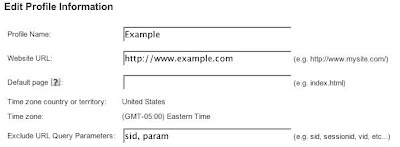Faithful Analytics blog readers, I don't want to bore or alienate any of you—a diverse and geographically disperse group of intelligentsia—but today's blog post draws on something close to my heart: a professional basketball team called the Boston Celtics. Stay with me, just for a few more sentences. All will become clear ...
About a week ago, the Celtics won the National Basketball Association championship over their biggest rival, the Lakers (sorry, Lakers fans). As I say when something like this happens, "Whoo-hooot!!!"
Ahem. Anyway, the reason the Celts won is that this season their management united three of the best players in the NBA: Kevin Garnett, Paul Pierce, and Ray Allen. These players strove for years to win the title on separate teams, playing with less talented players, and finally, when they joined forces, everything fell into place.
How does this trifecta relate to web analytics, online marketing, and website management, the topics closest to our heart? Well, we've also got a big three for you, dear reader. And they're taking the stage July 8 in a one-hour webinar, presented by our team, called, "The Google Trifecta."
Who are our big three? You might be able to guess: one of them is Google Analytics, so you can start getting your "Whoo-hooot!" ready. Rounding it out are Webmaster Tools and Website Optimizer, two other free Google tools for website-owners. The first helps you improve your site's visibility in Google search results, and the second helps increase your conversion rate once visitors arrive on your site.
Individually each tool is powerful; combined, they offer you a holistic, detailed understanding of your website: how you're faring on Google, how your visitors land on and navigate to your site, and which combination of content most effectively gets them to convert. If you're already using one tool, you can use your same login for the others. And unlike the Celtics, you don't have to trade any co-workers or pay any money.
In this vein, we posted a couple of months ago about how you can identify your high-value, low-performing pages with Google Analytics, then test and optimize them with Website Optimizer to improve your conversion rates.
Here's the webinar info:
TITLE: The Google Trifecta: Webmaster Tools, Analytics, Website Optimizer
DATE: Tuesday, July 8th, 2008
TIME: 9:00 - 10:00 am PT (Pacific Time)
JOIN US: Register to attend (free)
In the webinar, team members will introduce each product for newcomers, highlight recent product developments, and discuss the benefits of using all three products together. And when you register, we'll also invite you to submit any questions you'd like the presenters to answer.
In case you didn't know about Google Webmaster Central, take a look. It's a one-page resource linking to many of the tools Google offers to help you build and maintain an effective site, including Google Analytics, Website Optimizer, and Webmaster Tools, the trifecta, the big three, the three amigos, the rule of three. Hope to see you at the webinar!
About a week ago, the Celtics won the National Basketball Association championship over their biggest rival, the Lakers (sorry, Lakers fans). As I say when something like this happens, "Whoo-hooot!!!"
Ahem. Anyway, the reason the Celts won is that this season their management united three of the best players in the NBA: Kevin Garnett, Paul Pierce, and Ray Allen. These players strove for years to win the title on separate teams, playing with less talented players, and finally, when they joined forces, everything fell into place.
How does this trifecta relate to web analytics, online marketing, and website management, the topics closest to our heart? Well, we've also got a big three for you, dear reader. And they're taking the stage July 8 in a one-hour webinar, presented by our team, called, "The Google Trifecta."
Who are our big three? You might be able to guess: one of them is Google Analytics, so you can start getting your "Whoo-hooot!" ready. Rounding it out are Webmaster Tools and Website Optimizer, two other free Google tools for website-owners. The first helps you improve your site's visibility in Google search results, and the second helps increase your conversion rate once visitors arrive on your site.
Individually each tool is powerful; combined, they offer you a holistic, detailed understanding of your website: how you're faring on Google, how your visitors land on and navigate to your site, and which combination of content most effectively gets them to convert. If you're already using one tool, you can use your same login for the others. And unlike the Celtics, you don't have to trade any co-workers or pay any money.
In this vein, we posted a couple of months ago about how you can identify your high-value, low-performing pages with Google Analytics, then test and optimize them with Website Optimizer to improve your conversion rates.
Here's the webinar info:
TITLE: The Google Trifecta: Webmaster Tools, Analytics, Website Optimizer
DATE: Tuesday, July 8th, 2008
TIME: 9:00 - 10:00 am PT (Pacific Time)
JOIN US: Register to attend (free)
In the webinar, team members will introduce each product for newcomers, highlight recent product developments, and discuss the benefits of using all three products together. And when you register, we'll also invite you to submit any questions you'd like the presenters to answer.
In case you didn't know about Google Webmaster Central, take a look. It's a one-page resource linking to many of the tools Google offers to help you build and maintain an effective site, including Google Analytics, Website Optimizer, and Webmaster Tools, the trifecta, the big three, the three amigos, the rule of three. Hope to see you at the webinar!














